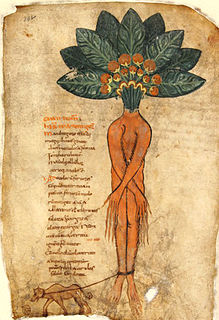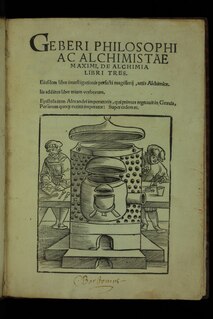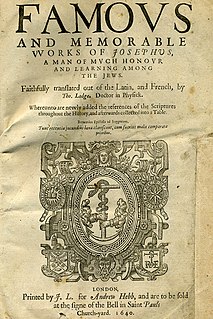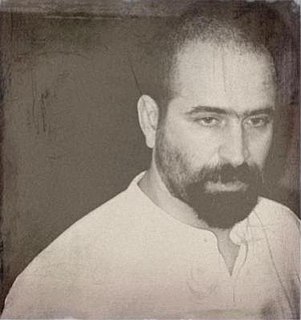 W
WPseudepigrapha are falsely attributed works, texts whose claimed author is not the true author, or a work whose real author attributed it to a figure of the past.
 W
WThe Acts of Peter and the Twelve is one of the texts from the New Testament apocrypha which was found in the Nag Hammadi library.
 W
WAnnius of Viterbo was an Italian Dominican friar, scholar, and historian, born Giovanni Nanni (Nenni) in Viterbo. He is now remembered for his fabrications.
 W
WWritten in Syriac in the late seventh century, the Apocalypse of Pseudo-Methodius shaped and influenced Christian eschatological thinking in the Middle Ages. Falsely attributed to Methodius of Olympus, a fourth century Church Father, the work attempts to make sense of the Islamic conquest of the Near East. The Apocalypse is noted for incorporating numerous aspects of Christian eschatology such as the invasion of Gog and Magog, the rise of the Antichrist, and the tribulations that precede the end of the world.
 W
WThe Book of Giants is an apocryphal Jewish book which expands the primeval creation to end of time narrative of the Hebrew Bible and, by its multifaceted elaborations on divine decrees of warning and doom, ties the ancient prophet Enoch closer to his generally recognized 'storyline' than does even the story's principal treatise of 1 Enoch. Together with 1 Enoch's Book of Watchers, as Enochian scholar James C. VanderKam maintains, "it stands as an attempt to explain how it was that wickedness had become so widespread and muscular before the flood; in so doing, it also supplies the reason why God was more than justified in sending that flood." The Giants discovery at Qumran dates the text's creation to before the 2nd century BC.
 W
WAli Puli, also known as Alipili, is the attributed author of a number of 17th-century alchemical and hermetic texts. However, his historical existence is doubtful, and A.E. Waite went as far as to describe the work attributed to him as "forgery pure and simple in respect of age and authorship [which] may be left to stand at its value in the matter of content."
 W
WJames Hamilton Charlesworth was the George L. Collord Professor of New Testament Language and Literature until January 17, 2019, and Director of the Dead Sea Scrolls Project at the Princeton Theological Seminary. His research interests include the Apocrypha and Pseudepigrapha of the Hebrew and Christian Bibles, the Dead Sea Scrolls, Josephus, the Historical Jesus, the Gospel of John, and the Revelation of John.
 W
WMaria or Marusia Churai (1625–1653) was a semi-mythical Ukrainian Baroque composer, poet, and singer. She has become a recurrent motif in Ukrainian literature and the songs ascribed to her are widely performed in Ukraine.
 W
W"Clotilde de Surville" was the supposed author of the Poésies de Clotilde. The generally accepted legend gave the following account of her:
 W
WThe Correspondence of Paul and Seneca, also known as the Letters of Paul and Seneca or Epistle to Seneca the Younger, is a collection of correspondence claiming to be between Paul the Apostle to Seneca the Younger. There are 8 epistles from Seneca, and 6 replies from Paul. Jerome mentioned them in his De Viris Illustribus. Until the Renaissance, the epistles were seen as genuine, but scholars began to critically examine them in the 15th century, and today they are universally held to be forged. J. B. Lightfoot noted:The poverty of thought and style, the errors in chronology and history, and the whole conception of the relative positions of the Stoic philosopher and the Christian Apostle, betray clearly the hand of a forger.
 W
WDemodocus is purported to be one of the dialogues of Plato. The dialogue is extant and was included in the Stephanus edition published in Geneva in 1578. It is now generally acknowledged to be a fabrication by a late sophist or rhetorician, probably later than mid-fourth century BC.
 W
WForged: Writing in the Name of God – Why the Bible's Authors Are Not Who We Think They Are is a book by the biblical scholar Bart D. Ehrman.
 W
WThe Gospel of James is a 2nd-century infancy gospel telling of the miraculous conception of the Virgin Mary, her upbringing and marriage to Joseph, the journey of the holy couple to Bethlehem, the birth of Jesus, and events immediately following. It is the earliest surviving assertion of the perpetual virginity of Mary, meaning her virginity not just prior to the birth of Jesus, but during and afterwards, and, despite being condemned by Pope Innocent I in 405 and rejected by the Gelasian Decree around 500, became a widely influential source for Mariology.
 W
WThe Gospel of Peter, or Gospel according to Peter, is an ancient text concerning Jesus Christ, only partially known today. It is considered a non-canonical gospel and was rejected as apocryphal by the Catholic Church's synods of Carthage and Rome, which established the New Testament canon. It was the first of the non-canonical gospels to be rediscovered, preserved in the dry sands of Egypt.
 W
WJosippon is a chronicle of Jewish history from Adam to the age of Titus. It is named after its supposed author, Josephus Flavius, though it was actually composed in the 10th century in South Italy. The Ethiopic version of Josippon is recognized as canonical by the Ethiopian Orthodox Tewahedo Church and the Eritrean Orthodox Tewahedo Church.
 W
WThe Key of Solomon is a pseudepigraphical grimoire attributed to King Solomon. It probably dates back to the 14th or 15th century Italian Renaissance. It presents a typical example of Renaissance magic.
 W
WEdward Williams, better known by his bardic name Iolo Morganwg, was a Welsh antiquarian, poet and collector of ill repute. He was seen as an expert collector of Medieval Welsh literature, but it emerged after his death that he had forged several manuscripts, notably some of the Third Series of Welsh Triads. Even so, he had a lasting impact on Welsh culture, notably in founding the Gorsedd. The philosophy he spread in his forgeries had an impact on early neo-Druidism. His bardic name is Welsh for "Iolo of Glamorgan".
Vishtaspa is the Avestan-language name of a figure of Zoroastrian scripture and tradition, portrayed as an early follower of Zoroaster, and his patron, and instrumental in the diffusion of the prophet's message. Although Vishtaspa is not epigraphically attested, he is – like Zoroaster – traditionally assumed to have been a historical figure, although obscured by accretions from legend and myth.
 W
WAndrei A. Orlov is an American professor of Judaism and Christianity in Antiquity at Marquette University. He "is a specialist in Jewish Apocalypticism and Mysticism, Second Temple Judaism, and Old Testament Pseudepigrapha. Within the field of Second Temple Jewish apocalyptic literature, Orlov is considered among the leading experts in the field of Slavonic texts related to Jewish mysticism and Enochic traditions." He "has established himself as a significant voice in the study of Second Temple Jewish traditions, especially those associated with 2 Enoch and other Slavonic Pseudepigrapha." Orlov is a veteran of the Enoch seminar and a member of the Advisory Board of the journal Henoch.
 W
WOssian is the narrator and purported author of a cycle of epic poems published by the Scottish poet James Macpherson, originally as Fingal (1761) and Temora (1763), and later combined under the title The Poems of Ossian. Macpherson claimed to have collected word-of-mouth material in Scottish Gaelic, said to be from ancient sources, and that the work was his translation of that material. Ossian is based on Oisín, son of Finn or Fionn mac Cumhaill, anglicised to Finn McCool, a legendary bard who is a character in Irish mythology. Contemporary critics were divided in their view of the work's authenticity, but the current consensus is that Macpherson largely composed the poems himself, drawing in part on traditional Gaelic poetry he had collected.
 W
WThe Prayer of the Apostle Paul is a New Testament apocryphal work, the first manuscript from the Jung Codex of the Nag Hammadi Library. Written on the inner flyleaf of the codex, the prayer seems to have been added after the longer tractates had been copied. Although the text, like the rest of the codices, is written in Coptic, the title is written in Greek, which was the original language of the text. The manuscript is missing approximately two lines at the beginning.
 W
WPseudo-Apuleius is the name given in modern scholarship to the author of a 4th-century herbal known as Pseudo-Apuleius Herbarius or Herbarium Apuleii Platonici. The author of the text apparently wished readers to think that it was by Apuleius of Madaura, the Roman poet and philosopher, but modern scholars do not believe this attribution. Little or nothing else is known of Pseudo-Apuleius apart from this.
 W
WPseudo-Chrysostom is the designation used for the anonymous authors of texts falsely attributed to John Chrysostom. Most such works are sermons, since a large number of John's actual sermons survive.
 W
WPseudo-Geber refers to a corpus of Latin alchemical writings dating to the late 13th and early 14th centuries, attributed to Geber, an early alchemist of the Islamic Golden Age. The most important work of the Latin pseudo-Geber corpus is Summa perfectionis magisterii, likely written slightly before 1310, whose actual author has sometimes been identified as Paul of Taranto. The work was influential in the domain of alchemy and metallurgy in late medieval Europe.
Vishtaspa is the Avestan-language name of a figure of Zoroastrian scripture and tradition, portrayed as an early follower of Zoroaster, and his patron, and instrumental in the diffusion of the prophet's message. Although Vishtaspa is not epigraphically attested, he is – like Zoroaster – traditionally assumed to have been a historical figure, although obscured by accretions from legend and myth.
 W
WAli Puli, also known as Alipili, is the attributed author of a number of 17th-century alchemical and hermetic texts. However, his historical existence is doubtful, and A.E. Waite went as far as to describe the work attributed to him as "forgery pure and simple in respect of age and authorship [which] may be left to stand at its value in the matter of content."
 W
WThe Slavonic Josephus is an Old East Slavic translation of Flavius Josephus' History of the Jewish War which contains numerous interpolations and omissions that set it apart from all other known versions of Josephus' History. The authenticity of the interpolations was a major subject of controversy in the 20th century, but the latest scholarship has rejected them.
 W
WThe Kybalion is a book originally published in 1908 by "Three Initiates" that purports to convey the teachings of Hermes Trismegistus. A modern Hermetic tract, it has been widely influential in New Age circles since the twentieth century.
 W
WRoman Turovsky-Savchuk is an American artist-painter, photographer and videoinstallation artist, as well as a lutenist-composer, born in Ukraine. His musical works were published under various pseudonyms, including Johann Joachim Sautscheck.
Zoroaster, also known as Zarathustra, Zarathushtra Spitama or Ashu Zarathushtra, was an ancient Iranian prophet who founded what is now known as Zoroastrianism. His teachings challenged the existing traditions of the Indo-Iranian religion and inaugurated a movement that eventually became the dominant religion in Ancient Persia. He was a native speaker of Old Avestan and lived in the eastern part of the Iranian Plateau, but his exact birthplace is uncertain.